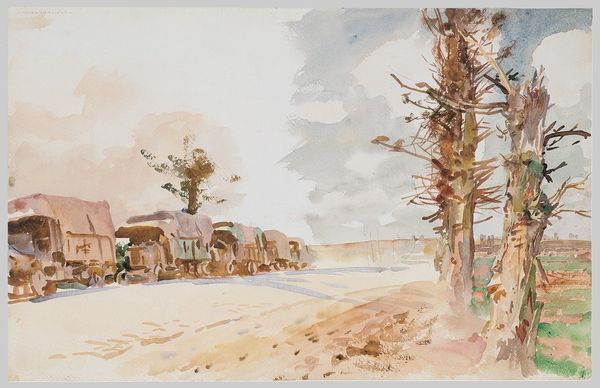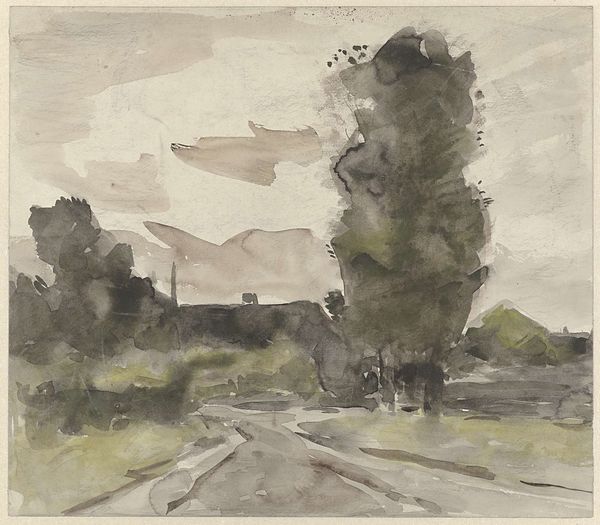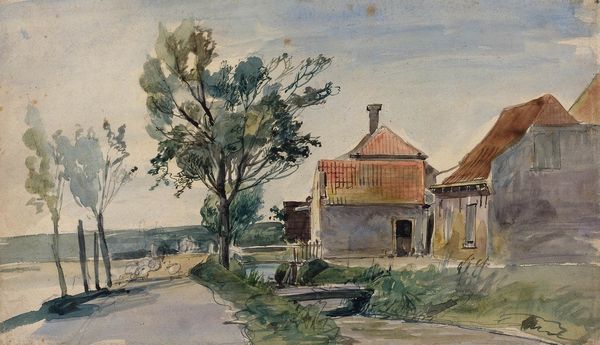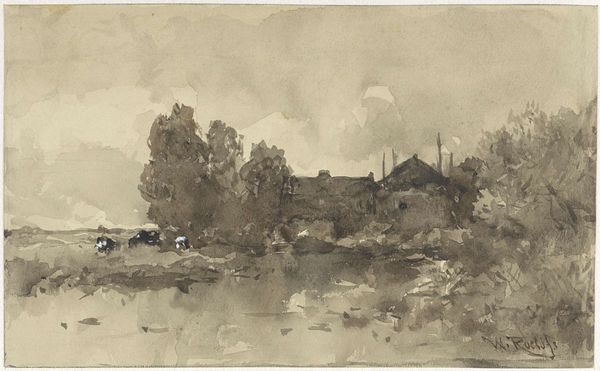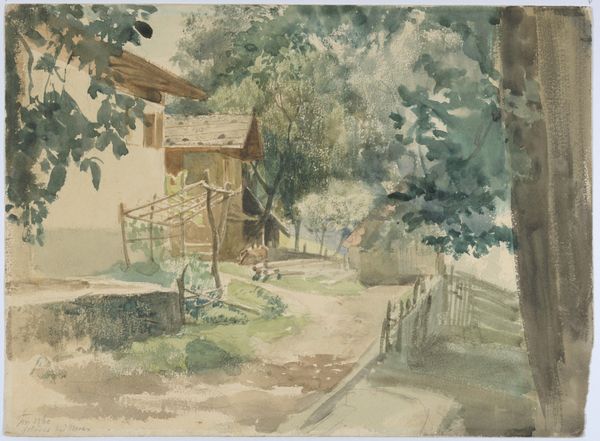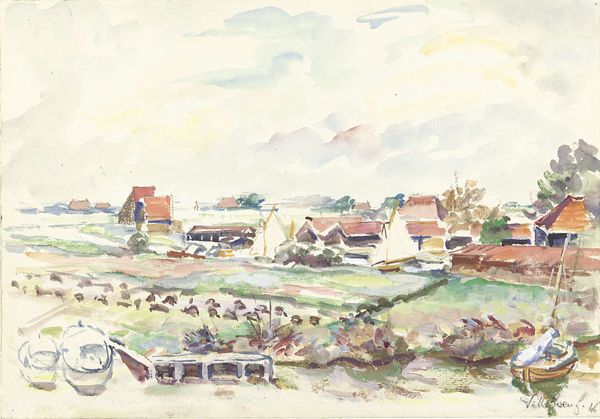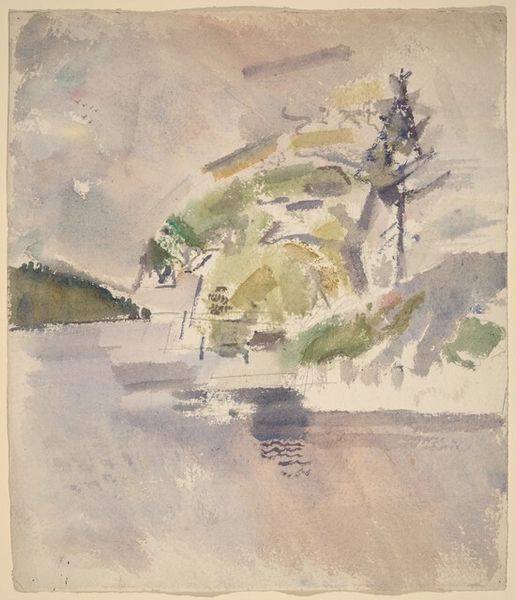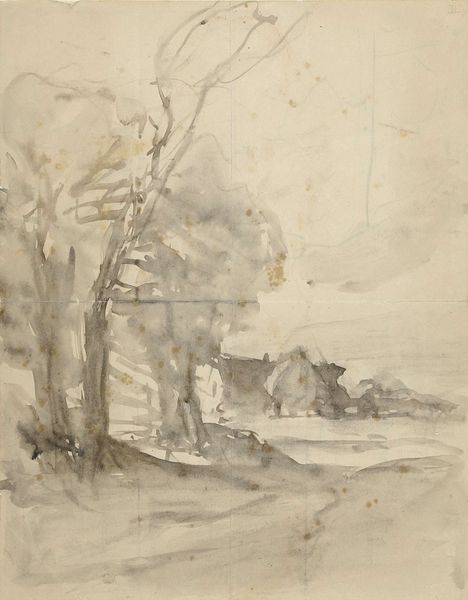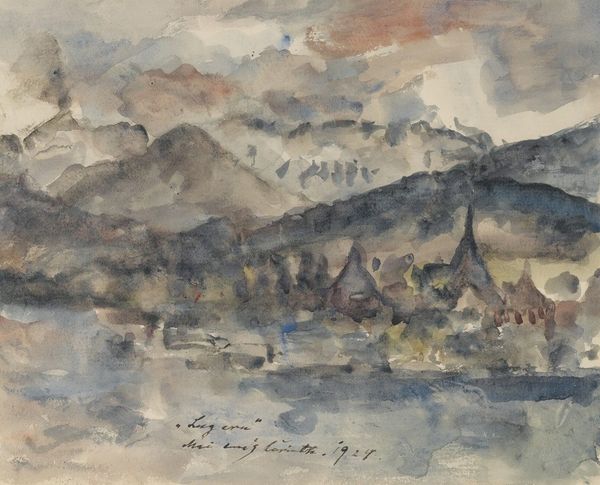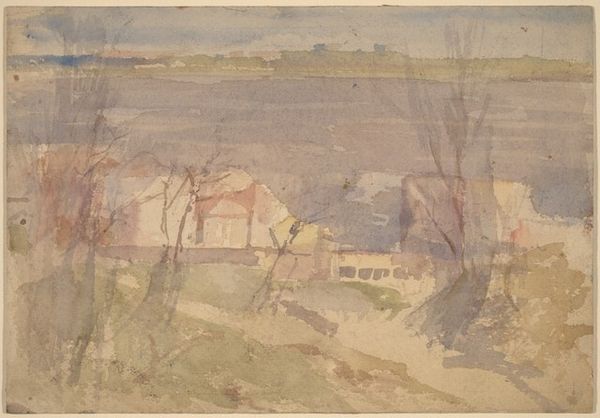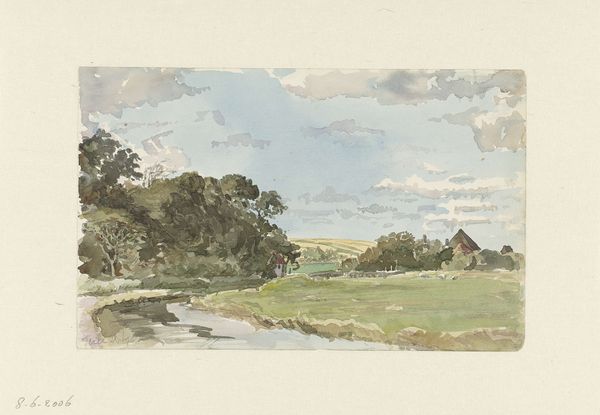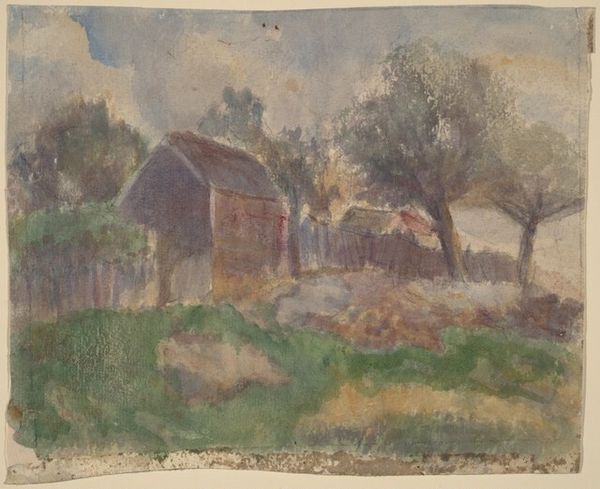
Copyright: Public Domain: Artvee
Editor: Rik Wouters’ watercolor, "Amersfeld – Amersfoort," created in 1916, has such a wistful, almost melancholic feel to it. The colors are so muted, creating this hazy landscape. What stands out to you when you look at this piece? Curator: The emotional weight lies, for me, in that haze. Wouters uses the symbolic language of Impressionism, to express a sense of place, and of *passing* through a place, yes? Watercolors are interesting as they inherently evoke transience and fragility, much like memory itself. Given the date of 1916, amidst the devastation of World War I, can this imagery also serve as an elegy? Do those strokes hint at loss, absence, the yearning for an idealized past before the war changed everything? Editor: That’s a powerful reading. I hadn't considered the wartime context so explicitly, but now the ephemeral nature of the watercolor really resonates with a feeling of longing. So, do you think he deliberately chose watercolor because of that sense of loss? Curator: Perhaps subconsciously, if not deliberately. The muted palette is doing something similar. Brown, violet and pale blues often connect with sadness and contemplation, but consider that many colours became muted during war because resources were limited and trade was cut-off; perhaps Wouters felt he could only reflect and record his landscape using such muted colours. These color choices serve not just as descriptive elements but as symbolic carriers of emotion. Editor: It’s fascinating how so much can be conveyed through something as simple as a limited color palette in a landscape. It's almost as though the painting is not just a place, but also a memory of that place. Curator: Exactly. And that interplay between representation and memory is where its enduring power lies. The symbolism subtly connects the personal landscape to a much wider collective consciousness affected by the global conflict, leaving one to contemplate. Editor: Thanks, I definitely have a deeper appreciation now for how this piece communicates on multiple levels. Curator: The cultural and historical lenses sharpen our vision.
Comments
No comments
Be the first to comment and join the conversation on the ultimate creative platform.
